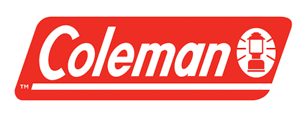Tents & Shelters
Tents
Tents come in a wide variety of shapes and sizes. Think of your tent as your cozy home away from home. Check online for the latest styles.
What to look for in a tent:
- Waterproofing:
- Make sure you get a tent with a ‘rain fly’, which is a second shell around your tent for rain protection. A full rain fly that comes right to the ground is best.
- The tent floor should be made of sturdy and waterproof material that comes part-way up the wall. This keeps water from entering from the ground. Consider using a ground tarp/sheet underneath your tent for added protection (make sure it is smaller than the tent bottom to prevent water from pooling).
- Many tents come with sealed or factory-taped seams to help keep the water out. If not, you can seal the seams yourself with ‘seam sealer’ which can be bought at any outfitting store. Read the tent manual to find the right seam sealer for your tent. We recommend sealing the seams once a year.
- Look for a water-resistant coating on the tent fabric.
- Mosquito/no-see-um mesh screens:
- Most tents have screen windows to allow for air circulation. Look for tents with “no-see-um screen windows” to ensure even the smallest insects stay out.
- Space:
- Many people like to choose a tent that sleeps 2 persons more than the number that will be using it. This will give you more comfort and space to store personal items.
- Many tents come with a room divider perfect for kids. If your children are older, they may prefer the independence of a smaller kids’ tent on your campsite. An extra small tent can be used as a “toy or play tent”, for storing gear or as a change tent.
- Some tents also have ‘vestibules’ for storing gear in a covered space outside the tent.
- Remember up to 3 shelters are permitted on your campsite.
Ambassador suggestion: Follow these easy tips for a clean and comfortable tent:
- Leave shoes outside the tent.
- A beach-mat at the entrance can help keep dirt from tracking in.
- Use a small broom whisk to clean tent if dirt gets in.
- Keep tent door zipped to keep bugs out.
- Keep your belongings away from the sides of the tent. If the tent and rain fly come into contact, your tent may leak in the rain.
Shelters
It is a good idea to bring along some shelter in addition to your tent. A shelter will provide shade on hot days and protection from the rain on stormy days.
There are two main types of shelter to consider:
Tarp Shelter:
A tarp shelter is the most cost effective option. Tarp shelters can be set up over the tent for extra protection or over the picnic table to create a covered outdoor area. All you need is a tarp with grommets, some rope and a few large trees. Always create a sloped roof to allow rain to run off. Never hammer nails into the trees as it can seriously harm them.
Free Standing Shelters:
There are a wide variety of portable shelters specifically designed for camping. These shelters are usually fairly compact and easy to set up. Because they are free standing, you don’t need to have trees to set them up. Many models come with screen sides to keep the bugs out as well! Check online to learn more.
Partners


